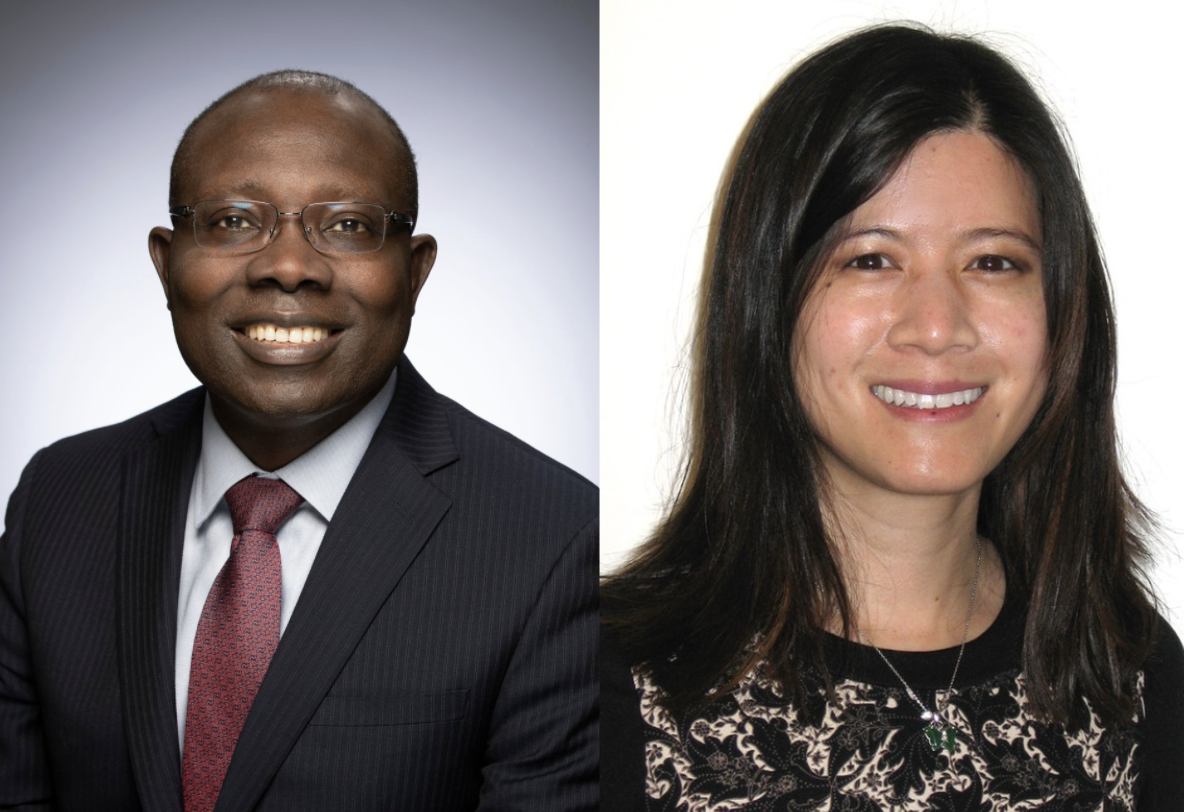
Casey Family Programs investment initiatives on diversity
On September 30, 2021, Knight Foundation released findings from a study assessing the representation of investment firms owned by women or members of racial or ethnic minority groups in the United States among investment firms used by the country’s top 55 charitable foundations in terms of total asset size. View the full report here and see the press release here.
Casey Family Programs’ Joseph A. Boateng and Sheng-Sheng Foo share insights below.
Diversity is our fiduciary duty

Casey Family Programs believes in fostering diversity, equity and inclusion (DEI) both at our foundation and in our communities. This value is core to our DNA and aligns our work with the diverse constituents we serve. It is an intentional part of what we do and who we are.
We also believe that advancing diversity, equity and inclusion with our investment partners and portfolio companies can lead to better decision-making and better business outcomes. In essence, doing good is good business. Addressing inequities within asset management is essential to run our investment portfolio successfully.
At Casey, our commitment to DEI is underpinned by the return on investment resulting from greater inclusion, in how we work to improve the well-being of America’s children and families, and with our investment partners. As Casey relies solely on investment income to support our mission and hundreds of employees, we focus on generating returns with an emphasis on capital preservation. Integrating diversity has added tangible value to Casey in enhancing investment returns and reducing risks; its benefits are irrefutable. Advancing diversity is not about checking boxes or sound bites. It is a matter of investment governance.
Just as we seek diversified portfolio exposures, we seek innovation and a range of thought and backgrounds in our team and partners amid an ever more dynamic, global investment backdrop. How can we fulfill our fiduciary responsibility as investors by overlooking such a large pool of talent and value add?
Despite profuse industry press on diversity, numbers don’t jive with the narrative. Metrics such as ownership are a start, but they fail to capture culture and the ability to influence investment decisions. Biases persist against emerging managers. There is a lack of demand, vs. supply, for diverse managers. In our approach to integrating diversity, we address these pain points as areas of opportunity.
As Casey primarily relies on external partners to execute our investment program, our primary tools to integrate diversity beyond our internal team are influence and engagement with our partners. We emphasize human capital development and the opportunity to influence investment decisions. We utilize data as a common language to track progress and engage with partners.
The key tenets of our approach to DEI include:
- Integration: Policy, culture, action
- At Casey, diversity starts at home. The tone is set from the top and exemplified by the breadth of voice and representation across our organization.
- Diversity is formally incorporated in Casey’s strategic objectives and stated values. Our goal to integrate financial and social objectives, including diversity, is embedded within our investment policy statement and investment beliefs.
- Since the inception of Casey’s investment office, we have intentionally built a diverse team. We seek talent from traditional and nontraditional channels.
- We hire diverse investment interns annually, including working with Girls Who Invest and Toigo. This intentional action opens doors to the investment field for the next generation of diverse leaders.
- Human capital development: Diversity needs to climb the corporate ladder.
- Our people and partners are our most valuable resource. We nurture career growth, including in the mid-level, where progression tends to stall for those of diverse backgrounds.
- Amid “diversity washing” metrics that may belie true influence, we go beyond ownership and hone in on equitable representation in investment decision-making vs. support roles. Do people of diverse backgrounds have the opportunity to progress, thrive and “belong” at the highest level of inclusion?
- We track the composition of our partners’ investment teams and hires over time. We look for tangible evidence of inclusion in the culture.
- Measurement and progression
- We believe data should inspire action. With hard data, we can have honest conversations aimed at closing the gap between the narrative of “we care about DEI” and numbers that suggest otherwise.
- Through ongoing measurement and dialogue with our partners, we have seen progress over the years in advancing diversity among investment decision-makers. We have catalyzed action by even raising the issue.
- We believe genuine change requires a collective effort toward transparency. Having organizations provide data on the demographic makeup of their teams and vendors is vital to moving forward. We applaud organizations that have begun releasing this data and hope others will soon follow.
- Engagement
- We believe that the strategy of voice is more powerful than exit, that engagement is more constructive than divestment.
- We apply our learnings to conversations with investment partners and industry peers and through conference speaking engagements.
- We leverage our seat at the table with like-minded investors to educate and advance diversity, including through the Council of Institutional Investors and Chatham House.
- Inclusion
- At the portfolio level, we rely on frameworks that have been finessed over the years to incorporate diversity as a risk factor and return opportunity.
- We cast a wide, inclusive net in sourcing investment opportunities globally, agnostic to manager size or track record. We have been day one investors in launches and niche strategies of diverse managers, including in regions beyond the U.S. This pool of diverse talent has added P&L and diversification to our portfolio. In an industry dominated by larger managers, diverse managers represent an untapped, differentiated source of excess returns.
- While Casey does not have a dedicated mission-related investment program, we find value-added opportunities to generate positive social and financial impact without sacrificing financial objectives. We have invested in strategies supporting capital access for minority businesses and housing access for disadvantaged women.
At Casey, we aim to build Communities of Hope, where all children and families have the access and opportunity to thrive. Our founder, Jim Casey, once said, “One measure of your success … will be the degree to which you build up others who work with you.” Embracing diversity has enhanced our portfolio’s risk/return and remains integral to our success. Diversity is not an endpoint or singular metric; it is infused in our culture and processes. It is part of our fiduciary duty as an investor.
Joseph A. Boateng is chief investment officer of Casey Family Programs, and Sheng-Sheng Foo is director of investments of Casey Family Programs.
Image (top) from Casey Family Programs.
America’s top foundations overwhelmingly invest their assets through white male-led firms, but a new study sees growing commitment to diversity
Recent Content
-
Learning and Impactarticle ·
-
Artsarticle ·
-
Learning and Impactarticle ·







